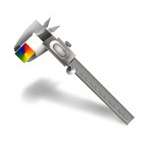 Step 1 - The Groundwork - how to get started Step 1 - The Groundwork - how to get started
Laying the Groundwork:
- Establish a realistic timeline. Starting an agency will take time. How long it takes depends on your situation and how much time you have to work on it. It almost always takes more time than you think it will. Expect at least six months to arrange financing (if necessary) and two weeks to obtain E&O insurance.
- Obtain qualified legal advice. This is necessary if you're in a current relationship that may involve non-compete or other contractual-related issues.
- Get an overview of the independent agency system and an introduction to basic insurance knowledge. If you have operated your own captive agency, you are ahead of the curve (especially if you were able to establish a book of business outside the captive market). You understand how an agency works and are versed in the technical aspects of insurance contracts; however, for as many similarities between owning a captive agency and owning an independent agency, there may be just as many differences.

Step 2 - The Business Plan - five things every business plan should address
Create the Business Plan: We will not bore you with the "not planning is planning to fail” lecture, but just about every industry relationship you need will require a formal written business plan. This includes carrier prospects for appointments and E&O insurance providers. The business plan consists of a narrative, resumes and several financial worksheets. The five things every business plan should address are:
- People - At its core, the fundamental value of any agency is in the capability of its people to execute its objectives. Therefore, your business plan should include information about the people who are responsible to execute it. At a minimum, include resumes on each of the key players that describe the professional and personal background relevant to the agency business as well as the knowledge, skills and abilities possessed by each. For start-ups, a lack of a demonstrated track record may inhibit your ability to attract prospective employees, customers and carriers. To mitigate this uncertainty, include an explanation of who you know and how you may be known in the community and/or industry.
- The opportunity - A key to agency success and of interest to all current and potential stakeholders is how the agency plans to acquire customers, including with what products and services and with what advantages over competitors. This section should demonstrate that you know who your customer is, what your products and services are and how you will position your products and services to be selected over those of your competitors.
- The business environment - Your business plan should demonstrate that you have a keen awareness of the external business environment in which you operate, that you understand its impact on your business prospects and how you will navigate and exploit it. The discussion should encompass regulation, the economy, labor supply, customer markets, suppliers, competitors and in what way the status of these factors is relevant to the operation of your agency.
- The risks - Many business plans, especially those that will be used outside the agency to attract other stakeholders, often make the mistake of painting only a rosy picture; however, risk is inevitable. The best business plan readily identifies and confronts the risks to be faced. Potential stakeholders, especially prospective carriers, will develop confidence in those agencies that pose the risks and provide strategies to resolve them.
- The numbers - You need to have realistic expectations of where revenues will come from and when and how cash will be used; furthermore, insurance carriers will be interested in growth projections. At a minimum, you should have a start-up budget, a cash flow forecast and a production forecast.

Step 3 - E&O and Legal Criteria - licensing, registration, tax ID, etc.
Meet Legal Criteria:
Choose an Entity - There are three broad categories to investigate when determining your business organization: sole proprietorships, partnerships and corporations. While sole proprietorships are the least expensive and easiest to create, they carry a risk of personal liability for the owners. Partnerships and corporations can afford further protection for the owners, but require more paperwork and costs.
- Register With the State Corporation Commission - All businesses in Virginia
- Obtain IRS ID - The IRS requires a Taxpayer Identification Number for all entities. This number is used in the administration of tax laws. If your agency is organized as a sole proprietorship, your social security number is your tax identification number. If your agency is organized as a partnership or corporation, you are given a Federal Employer Identification Number (FEIN).
- Sole Proprietorships
- Partnerships
- Corporations
- LLC
- Apply for E&O - Since this is a new independent agency, and most professional liability policies are on claims-made policy forms, your new E&O policy will have a retroactive date of the policy inception. In addition, since your agency is new and there is no previous information to reference, the E&O carriers will essentially have to underwrite you, as the owner, and your goals for the agency. E&O carriers will require a business plan and resume with all new applications. VFSC, Virginia Financial Services Corporation, is part of a national purchasing group providing E&O coverage to members. For this reason, IIAV membership is required in some cases before your E&O application can be processed. The association is here to help members succeed. IIAV also offers support through education, insurance market placement, technical advice, governmental advocacy and agency management support.
- Obtain Licenses - For sole proprietorships, one or more specific licenses is issued to the individual such as Property & Casualty; Life; Health; and so forth. However, the individual must file a form to register an assumed name under which he or she will be operating. For partnerships and corporations, the entity must also have a separate license filed with the Bureau of Insurance.

Step 4 - Access to Insurance Markets - secure direct appointments and indirect markets
Secure Market Commitments:
Direct appointments with a variety of established carriers that have broad, competitive insurance products to offer is the ideal situation; however, they are very hard to come by unless you have at least a three-year track record and a sizable book of business that you can offer. For most start-ups, market commitments will have to come from a combination of a few possible direct appointments and/or a variety of indirect markets such as wholesalers, managing general agencies and market aggregators.
- Direct Appointments - IIAV's company Resource Library lists many of the insurance companies that operate through the independent agency system; however, most will only appoint agents who have some sort of established track record and/or are located in selected marketing territories. As an IIAV member, you also are a member of the Independent Insurance Agents & Brokers of America, giving you access to a number of markets it provides. As a member, you will also have access to IIAV’s exclusive and easy-to-use FIND A MARKET program that will make it much more efficient to search for markets.
- Market Aggregators - Market aggregators provide assistance to new agents in setting up their first agency office, access to otherwise unattainable markets and niche programs, the opportunity to obtain direct company appointments and a chance to share in the network's profitability. In return, these networks usually ask agents to pay a percentage of commission, a membership fee, or require them to give up a small stake in the value of the book of business built up through the aggregator. Be sure to review the contractual relationship with these entities carefully, especially as they relate to book ownership, commission or revenue sharing and exit costs.

Step 5 - Agency Management System - framework for all the necessary business processes
Choose an Agency Management System:
A fundamental building block for today's successful independent insurance agency is a good agency management system that can provide a framework for all the necessary business processes. The most effective independent agencies have maximized the ability to operate as digitally as possible, minimizing double entry and moving paper. Agency management software can range in cost from less than $1,000 to $5,000 for a start-up operation with monthly fees of $60 to $600, depending on the level of sophistication you desire. It is advised that a new agency should not skimp on agency management software since it will pay in the long run to operate as electronically as possible. When you join IIAV, you also become a member of the Independent Agents & Brokers of America, IIABA. IIABA sponsors an organization made up of independent agencies, carriers and technology vendors called the Agents Council on Technology. The ACT website has numerous resources to help agencies harness technology to maximize productivity and profitability.
Through your IIAV membership your new agency also will have access – upon qualification – to the Eagle Advantage Agency.

Step 6 - Workflow Procedures - develop a written procedures manual
Establish Workflow Procedures:
In Virginia, it is estimated that one in five agents will be involved in an E&O claim. One of the best ways to avoid this potential is to create and develop a written procedures manual. This document should be fluid and adaptable to meet the market and client demands, but should also establish some structured guidelines to enforce the way you want your business handled.

Step 7 - Additional Training - technical and management
Obtain Additional Training - Technical, Management:
Depending on your level of industry experience, or your level of expertise in the various lines of business you intend to offer, IIAV offers a broad array of training resources to fit your needs.

Step 8 - Recruit - the right staff for the right roles
Recruit Staff:
Whether you need staff right off the bat or down the road, recruiting the right talent for the right roles is not easy, especially if you're doing everything in the agency yourself. IIAV's Career Center, featuring a job board, is there to help when you're ready.
|